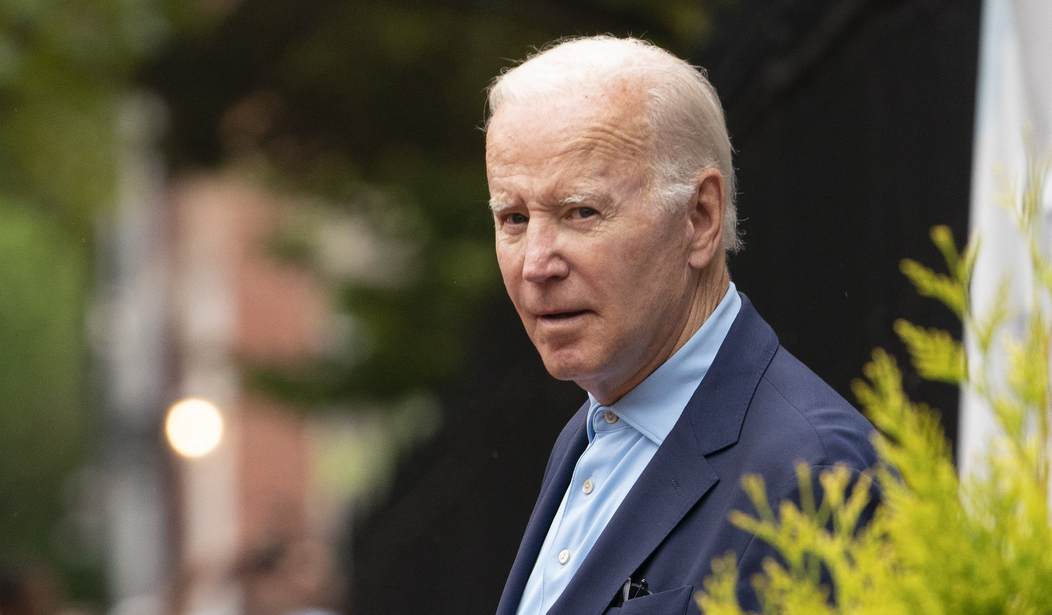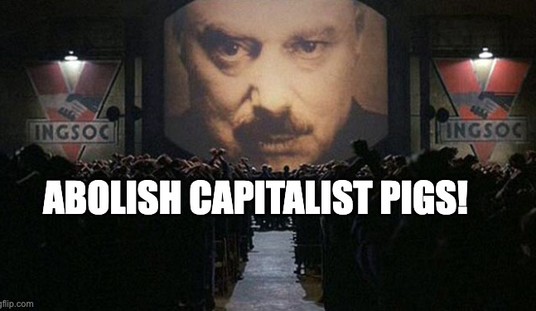The good news: For the first time in well over a year, month-on-month inflation stopped in the Consumer Price Index for July. The not-so-great news: That was almost entirely related to a sudden fuel decline in demand that normally signals a recession. According to the Bureau of Labor Statistics, the year-on-year inflation rate remained a red-hot 8.5%, down slightly from last month’s 9.1% but still one of the highest readings this year:
The Consumer Price Index for All Urban Consumers (CPI-U) was unchanged in July on a seasonally adjusted basis after rising 1.3 percent in June, the U.S. Bureau of Labor Statistics reported today. Over the last 12 months, the all items index increased 8.5 percent before seasonal adjustment.
The gasoline index fell 7.7 percent in July and offset increases in the food and shelter indexes, resulting in the all items index being unchanged over the month. The energy index fell 4.6 percent over the month as the indexes for gasoline and natural gas declined, but the index for electricity increased. The food index continued to rise, increasing 1.1 percent over the month as the food at home index rose 1.3 percent.
This is only good news for a longer deflection on inflation if one thinks that demand will not return for gasoline or that supplies will expand rapidly to meet it. The EIA data showed supply increasing through May, but expects that it dropped over the last two months:

If prices are declining while supplies decline, that means demand is declining faster than supply. That would be a significant indicator of recession, which is not a great piece of news for anyone, especially the White House. And even if gas prices don’t rise quickly, inflation is still a problem in the so-called core CPI:
The index for all items less food and energy rose 0.3 percent in July, a smaller increase than in April, May, or June. The indexes for shelter, medical care, motor vehicle insurance, household furnishings and operations, new vehicles, and recreation were among those that increased over the month. There were some indexes that declined in July, including those for airline fares, used cars and trucks, communication, and apparel.
The all items index increased 8.5 percent for the 12 months ending July, a smaller figure than the 9.1percent increase for the period ending June. The all items less food and energy index rose 5.9 percent over the last 12 months. The energy index increased 32.9 percent for the 12 months ending July, a smaller increase than the 41.6-percent increase for the period ending June. The food index increased 10.9 percent over the last year, the largest 12-month increase since the period ending May 1979.
That’s also slower than we’ve seen in a few months, which is also good news … unless it’s tied to dropping consumer demand. There are two ways to solve a supply-crisis inflation, after all — either produce more or convince consumers to buy less. The former promotes growth while the latter creates recessions. And the fuel curve suggests that we’re doing a lot more of the latter than the former.
Even the good news from July’s flat month doesn’t change the overall inflection of the inflationary wave, reports the Wall Street Journal. That can be seen not just in the goods sector, but also the services and housing sectors:
U.S. inflation was 8.5% in July, the Labor Department said Wednesday, holding close to its highest annual rate in four decades despite easing energy costs.
Rapidly rising prices have become persistent following a surge in inflation from goods, energy and food, said Greg Daco, chief economist for EY-Parthenon, a consulting firm.
“That divergent trend shows there’s a breadth of inflation in that housing inflation and service-sector inflation remain elevated,” he said, adding price pressures in those areas could linger. “And those tend to be stickier than goods, which can and will start to reverse.”
The core-CPI reading may have improved somewhat, but not enough to change the Fed’s mind about stamping out demand through its monetary policy:
Gasoline prices tumbled in July and into August, with U.S. gasoline prices dropping for more than 50 days, according to OPIS, an energy-data and analytics provider owned by Dow Jones & Co., publisher of The Wall Street Journal. The average price of a gallon of regular gas nationally was $4.03 on Tuesday, almost $1 cheaper than in mid-June but still higher than a year ago. That sharp drop in gasoline prices, along with easing prices for food and other energy commodities, suggest some price pressures have moderated.
While the Fed targets overall inflation measures, it sees core prices as a better indicator of future inflation. Economists and policy makers are watching the latter in particular for signals that inflation is on a path to hit the Fed’s 2% target within a couple of years. An elevated rate of price gains adds pressure on the Fed to increase rates aggressively.
Even if core CPI remained at 0.3%, its annualized rate would come close to or exceed 4% with compounding. That’s twice the target rate of inflation for the Fed, and that’s just a single month. This month’s reported 5.9% year-on-year core CPI is nearly three times that target. That means that the Fed will continue to act aggressively with interest-rate hikes that will sap investment capital, especially given last month’s high job-growth figures.
So the good news here isn’t really all that good. Just to get a perspective on where we’re at with this month’s CPI reading, the BLS offers this chart depicting both overall and core CPI readings for the past year:

This is still the fifth straight month that overall CPI inflation has remained above 8%. Core CPI has been above 5% for ten straight months, and is flattening out around 6% over the last three months. Those are not good signs, especially when considering that all of these reports are compounding on high inflation rates from a year ago. Starting in April, the year-on-year comparisons used 2021 inflation rates that were already above Fed target levels, which means that we’re only slowing down in relation to last year’s inflation acceleration.
And on top of that, inflation’s persisting into what looks like a looming recession, if it has not yet arrived.
Update: Heather Long reminds us that consumers are still getting hammered in almost every category except at the pump:
Inflation dropped to 8.5% in July (down from 9.1% in June).
Big declines in gas prices (-7.7% in July) and airfares (-7.8% in July) helped a lot.
But…grocery prices, rent and electricity continue to rise pic.twitter.com/sVO5dr6eco
— Heather Long (@byHeatherLong) August 10, 2022
I’m glad Heather pointed this out, because it’s a key to grasping how inflation is experienced by American households. Gasoline may be dropping due to lower demand, but food and rent are more difficult to temper through demand. Those prices are somewhat locked in for American workers, and they’re continuing to rise quickly. That further erodes their income by sapping its buying power, and this clearly shows that we’re on the path of having a sixth straight quarter of decline in real disposable personal income. That will eventually create a recession, but it has already felt like a recession to American households thanks to these very factors.








Join the conversation as a VIP Member